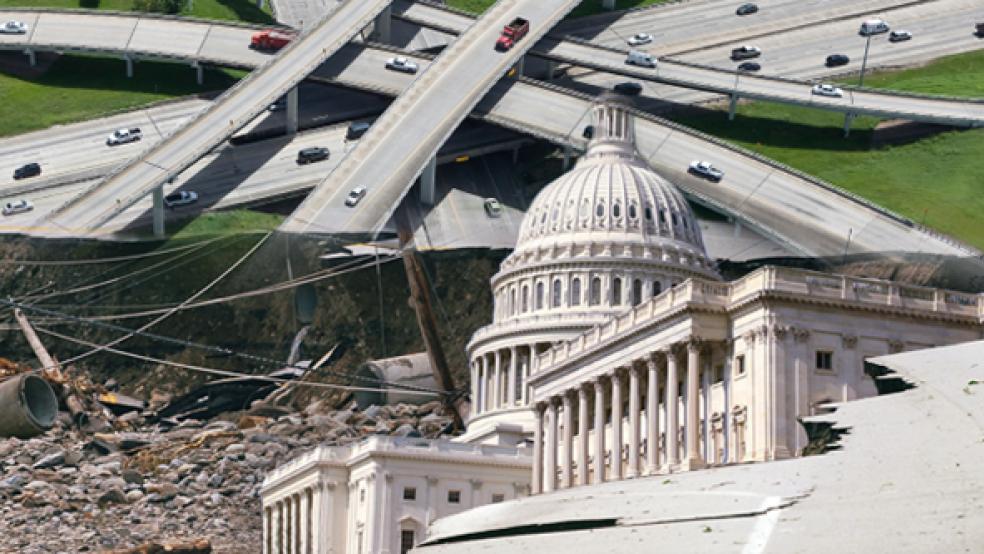With Congress facing a June 30 deadline on reauthorization of the highway trust fund, the Congressional Budget Office weighed in Tuesday with a report showing that repairing the nation’s aging roads and mass transit systems is about to get a lot harder.
Higher fuel economy standards for all cars and light trucks starting in 2017 will slash gasoline consumption to the point that already-dwindling gas tax revenues will shrink by 21 percent by 2040, the report said. The Highway Trust Fund depends on an 18.4-cent-per-gallon fuel tax to pay for most of the nation’s highway and mass transit repair and expansion programs.
The tax is already falling short of projected expenses, which the nation’s civil engineers continually rate as falling far short of actual needs The American Society of Civil Engineers gave America’s roads a D- grade, and mass transit and the nation’s infrastructure as a whole D grades in its 2009 report card.
The CBO projected the fund will pay out $589 billion to states by 2022, but will only take in $442 billion. In 2008 and again in 2010, the federal government made up shortfall by transferring money from general fund tax receipts to the Highway Trust Fund.
Had the higher fuel efficiency standards that go into effect in 2017 been in effect in 2012, CBO estimated trust fund revenues would have fallen another $57 billion short of current projections. “Policies that are designed to reduce gasoline consumption, including those that would impose stricter standards for the fuel economy of vehicles, could decrease revenues for the trust fund and thus add to the shortfall,” the report said.
Current fuel efficiency standards call for new vehicles to travel 29.7 miles per gallon of gas—a level which will rise to 34.1 miles per gallon for new vehicles by 2016. The National Highway Transportation Surface Agency and the Environmental Protection Agency’s latest recommendations will increase fuel efficiency standards for new vehicles to 49.6 miles per gallon by 2025.
The standards, first enacted in 1978, are designed to curb the environmental effects of pollution and reduce U.S. dependence on foreign oil.
CBO offered limited options for offsetting the projected shortfalls. The government could either hike the gasoline tax by 5 cents-per-gallon, cut federal spending on highway and mass transit projects by 10 percent or divert more funds from the general fund to highways, the report said.
Outside experts and think tanks believe the government must seek out alternatives for infrastructure spending. For instance, federal and state governments could use information technology devices to charge vehicles road-usage fees that would reflect both miles driven and vehicle weight, which is the primary determinant of much wear-and-tear an individual vehicle does to a road. Republicans have also suggested eliminating funding for mass transit projects, which receive an earmarked 20 percent of highway trust funds.
Fuel efficiency standards aren’t the only roadblock standing in the way of nation’s ability to finance the movement of goods, services, and people. Americans are also driving less, a trend likely to accelerate as baby boomers age and enter their commute-free years.
A slower-growing economy is also contributing to falling consumption. Americans consumed just 8.7 barrels of gasoline a day in 2011, down from 9.3 million barrels in 2008.
The political gridlock surrounding the current transportation bill /node/55104 has put states in limbo, leaving them unsure whether and how much support they will receive next year from the federal government for highway, bridge, and other transportation projects. Congress passed a three-month stopgap bill in March to keep federal highway and transit aid flowing to states through the summer construction season.
But states say they are stuck in a holding pattern on hiring and planning projects, since nearly half of their transportation funding hails from the federal government and there’s no guarantee that longer-term funding will be approved come June 30.


